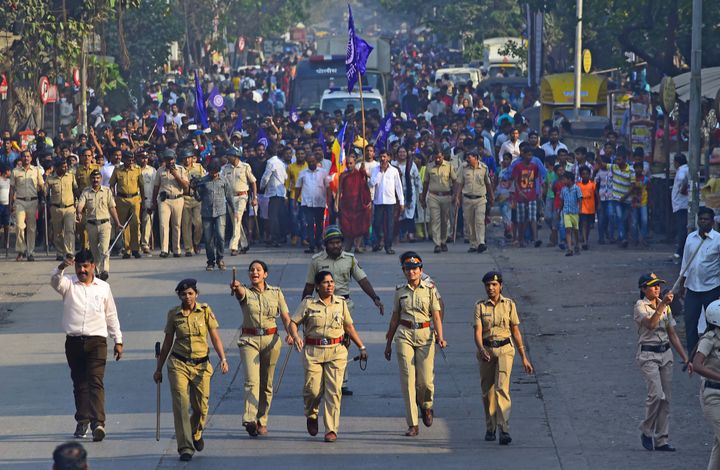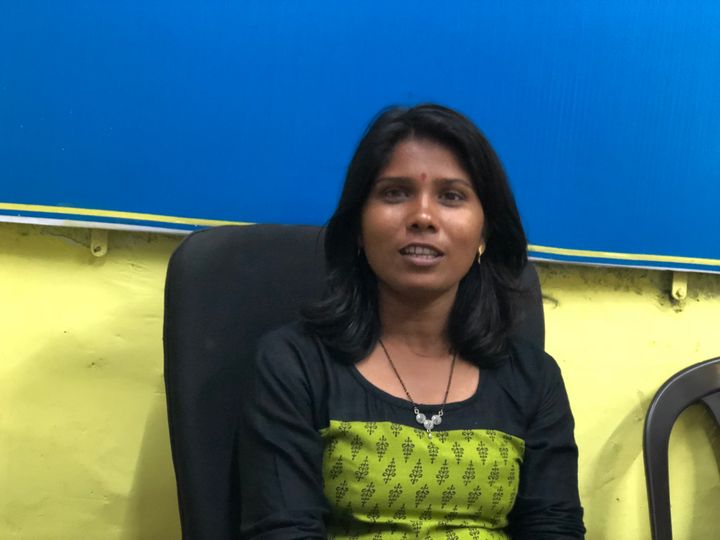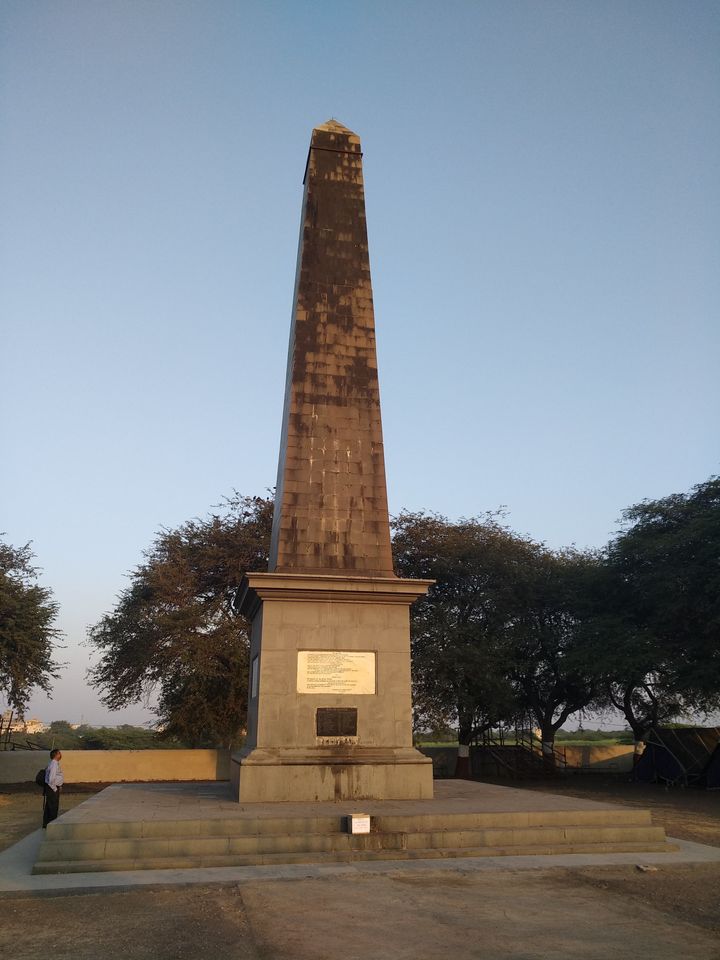
On January 1, 2018, Anjana Gaikwad, a 26-year-old Dalit activist from Pimpri Chinchvad town in Pune, was heading towards the Bhima Koregaon Vijay Stambh (victory column) on the outskirts of the city with her younger brother, Santosh Shinde.
Gaikwad and Shinde had planned to join the thousands of Dalits from across Maharashtra who had gathered in Bhima Koregaon to pay tribute to the Dalit soldiers who, as a part of a British army, defeated a Peshwa army in 1818 despite being outnumbered. 2018’s commemoration was to mark the 200th anniversary of the victory.
But when the siblings’ bike reached Sanaswadi, a village near Bhima Koregaon, Gaikwad saw a violent mob furiously pelting stones at anyone wearing white clothes or carrying the blue flags associated with the Dalit movement.
“They had hidden their faces with scarves, were carrying bottles and stones and came aggressively at us as we reached Sanaswadi. We left our bike and took shelter in a nearby house. Not a single shop was opened. The atmosphere was tense and that of a complete shutdown,” recalled Gaikwad, who runs a social group to help poor students in Pimpri Chinchwad.
“After some time, the local resident who had given us shelter asked us to leave. When we came out, furious stone pelting was going on and vehicles were being torched by a mob carrying saffron flags. At that moment I thought we would not return home alive,” she said.
Gaikwad and her brother were lucky to have escaped the mob which attacked Dalits in the Perne, Sanaswadi and Bhima Koregaon villages, which are controlled by the Marathas, a dominant caste.
28-year-old Rahul Fatangade of Sanaswadi wasn’t as lucky—he was killed by a mob, allegedly made of Dalits angered over the stone pelting, when he stepped out to buy a tap, wearing a T-shirt with Shivaji’s image.
Dalit activist Rahul Dandale, who was present when the violence unfolded, said that over 100 people, mostly Dalits, suffered serious injuries in the stone pelting and had to be hospitalized.
“Over 800 people were injured and over 200 vehicles were torched by the mob carrying saffron flags. This riot did not stop on January 1. On January 2, many houses of Dalits in Bhima Koregaon were burnt. They targeted especially those who had helped provide shelter and food to the Dalits gathered on the 200th anniversary of Bhima Koregaon battle,” Dandale told HuffPost India.

In the year that has passed, the violence aimed at the Dalit assertion hasn’t faded from public memory—the Maharashtra police conducted midnight raids and arrested 10 activists and lawyers in June and then in August, accusing them of instigating the violence and having links with Maoists.
None of this, however, has deterred Gaikwad. This time, she says, she will reach the memorial a day early to spend the night and help make arrangements for the programme on 1 January.
“There is a slight fear in my mind that things could go wrong again this year but I am not going to sit at home. We will face whatever that happens but we will go there because Bhima Koregaon is an inspiration to us. Even if violence takes place, even if I don’t come back alive, I will go there this year,” she said.
And she’s not alone. Shivaji Bodkhe, the Pune city joint Commissioner of Police, said that 75,000 to 1 lakh people are expected to visit Bhima Koregaon this year.
Differing versions
Sadashiv Shelar, the police inspector of Shikrapur police station under whose jurisdiction all three villages fall, says 22 FIRs were registered and 114 arrested for the violence earlier this year and the resultant damage of public property.
Dalit groups say Hindutva activists, led by Manohar alias Sambhaji Bhide and Milind Ekbote, were responsible for the violence.
However, the Maharashtra police has continued to stick to its Maoist theory.
A report submitted by the police in a Pune court has accused these activists of “funding, organizing and participating” in an Elgar Parishad in Pune on 31 December 2017.
“The members of Kabir Kala Manch and Sudhir Dhawale (an activist from Mumbai) presented objectionable songs, gave seditious speeches and tried to create a rift in the society which resulted in the violence at Bhima Koregaon,” the police report says.
Many villagers, witnesses to the violence and former Supreme Court justice PB Sawant, one of the organisers of the Parishad, have said over and over again that there was no connection between the meeting and the violence.
“It was like a rain of stones from every building’s terrace. Not a single shop was open. The Dalits were not even getting a drop of water from anywhere. Every vehicle with a blue flag was being vandalized. Every person wearing white clothes was being trashed by the people carrying saffron flags”
Behind the violence
HuffPost India spoke to nine Dalits who witnessed the violence and multiple villagers to piece together the chain of events.
In the 17th century, Sambhaji, the son of Shivaji, is said to have been killed and his body parts chopped and thrown in Vadu Budruk, a village 3 km away from Bhima Koregaon.
Dalits believe that Govind Gaikwad, a Dalit resident of Vadu Budruk, defied the orders of Mughal emperor Aurangzeb to collect the body parts of Sambhaji and cremated him, an act for which he had to face the wrath of Mughals.
Marathas, however, dispute this, claiming that their ancestors cremated Sambhaji’s remains, leading to many among them having the surname ‘Shivale’ (the one who stitches).
There are tombs of both Sambhaji and Gaikwad in Vadu Budruk. On 28 December 2017, the latter was found desecrated,leading to a dispute between the two sections.
After the Dalits approached the Shikrapur police, 49 Maratha villagers were booked under the SC/ST Prevention of Atrocities Act. After some village elders intervened, the Dalit villagers withdrew their complaints.
However, soon rumours began to spread that Sambhaji’s tomb had also been desecrated, infuriating the Marathas.
The gram panchayats of Bhima Koregaon and other neighbouring villages called for a bandh on 1 January.
That day, as Dalits began gathering at the Vijay Stambh, over 2,000 men organized a bike rally from Vadu Budruk to Bhima Koregaon.
The rally, whose participants carried saffron flags, reached Bhima Koregaon at 10.30 am.
Jaideep Sakat, an activist who was at the spot, alleged that the policemen present in Bhima Koregaon, including Ramesh Galande, then inspector of Shikrapur, allowed the rally to move towards the Vijay Stambh instead of stopping or diverting them.
And then the stone-pelting began.
“It was like a rain of stones from every building’s terrace. Not a single shop was open. The Dalits were not even getting a drop of water from anywhere. Every vehicle with a blue flag was being vandalized. Every person wearing white clothes was being trashed by the people carrying saffron flags,” remembers Sakat, whose house was burnt down the next day.

Both Gaikwad and Sakat are concerned that the culprits of the violence, especially Bhide, are still free.
“What message does the state government want to give? If the rioters are not punished they will indulge in violence again this year. They have acted swiftly on one FIR which suited them, but what about FIR against Bhide?,” asked Sakat.
Sakat’s 17-year-old sister Puja, who was an eyewitness to the violence on 1 January and the torching of her house, was found dead under suspicious circumstances in April this year. While her family says there were 16 injuries on her face, the police have said it was an accidental death.
Uneasy peace
Sakat, his father and many other victims and eyewitnesses of the violence have now been provided police security but Gaikwad, who was also a complainant against Bhide, has not been given this despite repeated requests.
While Ekbote, who was earlier a Pune Municipal Corporation member from the Bharatiya Janata Party, was arrested, he got bail within months. Octogenarian Bhide remains untouched.
The police and district administration aren’t leaving anything to chance this year.
On 19 December this year, a dispute broke out in Vadu Budruk over a board of BR Ambedkar, but within hours senior police officials reached the spot and pacified the villages.
The shop owners in Bhima Koregaon were asked by some people to observe a bandh again on 1 January 2019 but again, the police acted swiftly and asked the shop owners to keep the shops open.
“We have conducted 31 meetings with local villagers to make sure this year’s event is peaceful. We have issued notices to 122 people under section 107 of the CrPC… We will use six drones on the day of the event to keep an eye everywhere,” Inspector Shelar told HuffPost India.
Pune rural SP Sandip Patil told a review meeting that he and the Pune collector had held meetings with local villagers.
The village bodies which called for a bandh last year have been asked for welcome Dalits with flowers.
However, some hints of the strain are showing.
The residents of Vadu Budruk have been asked not to speak to journalists and there is heavy police presence near the tombs of Gaikwad and Sambhaji.
Most of the Maratha residents of Bhima Koregaon told this reporter that they were away when the violence took place on January 1, 2018.
The police are still emphasizing the purported Maoist angle to the violence.
The commission set up by the state government in February to investigate the violence in Bhima Koregaon has cross-examined only three witnesses since September this year.
Two out of six people accused of Rahul Fatangade’s murder are yet to be apprehended, and the police have not been able to track down three people who were accused of being involved in violence against the Dalits.
However, Sakat, Gaikwad, Dandale and other Dalit activists say that they will not let the culprits go unpunished.
“The violence was bad but now Bhima Koregaon is known all over the country. Until last year, people from Maharashtra only would come to this place but now people from all across the country would turn up here. Their attack on us has made this event a national event now,” a Dalit activist, who is part of the organizing committee for the 1 January programme, told this reporter.
Inspector Shelar agrees. Bhima Koregaon, he says, has now become like Pandharpur, a pilgrimage town in Maharashtra visited by lakhs of people every year.